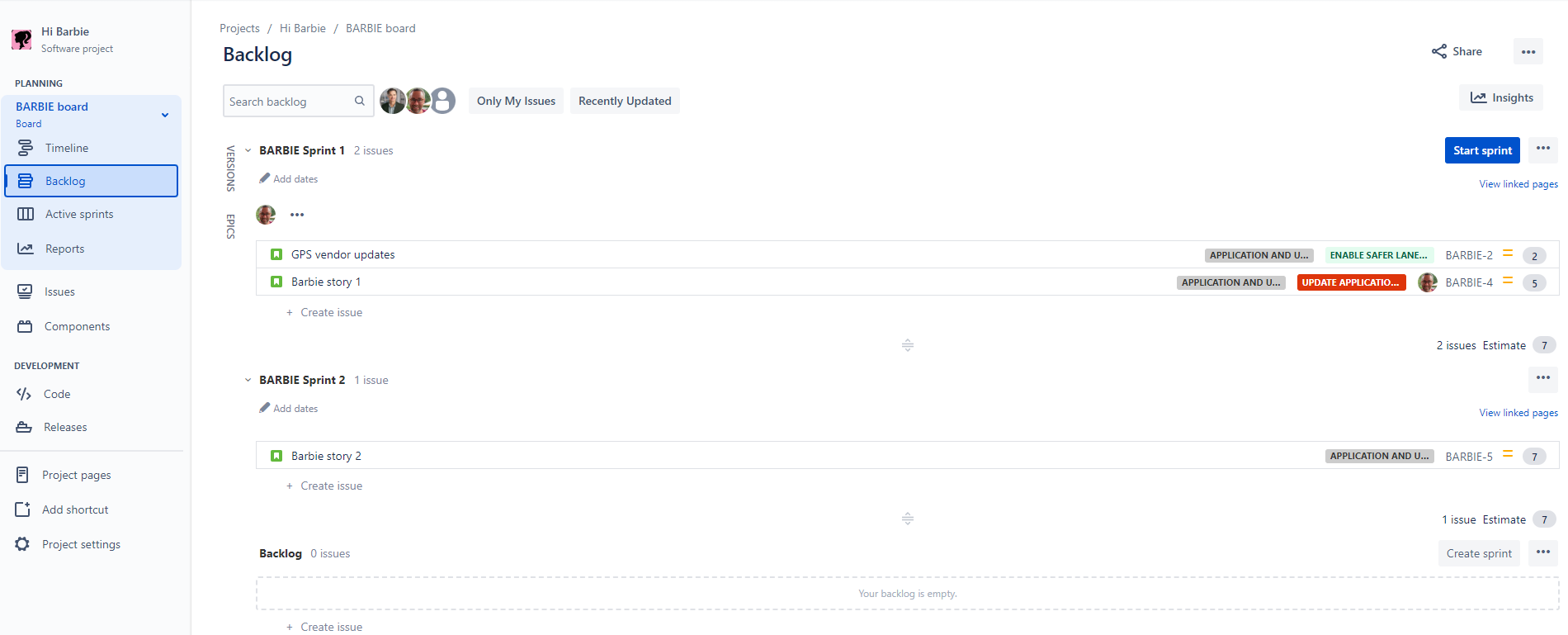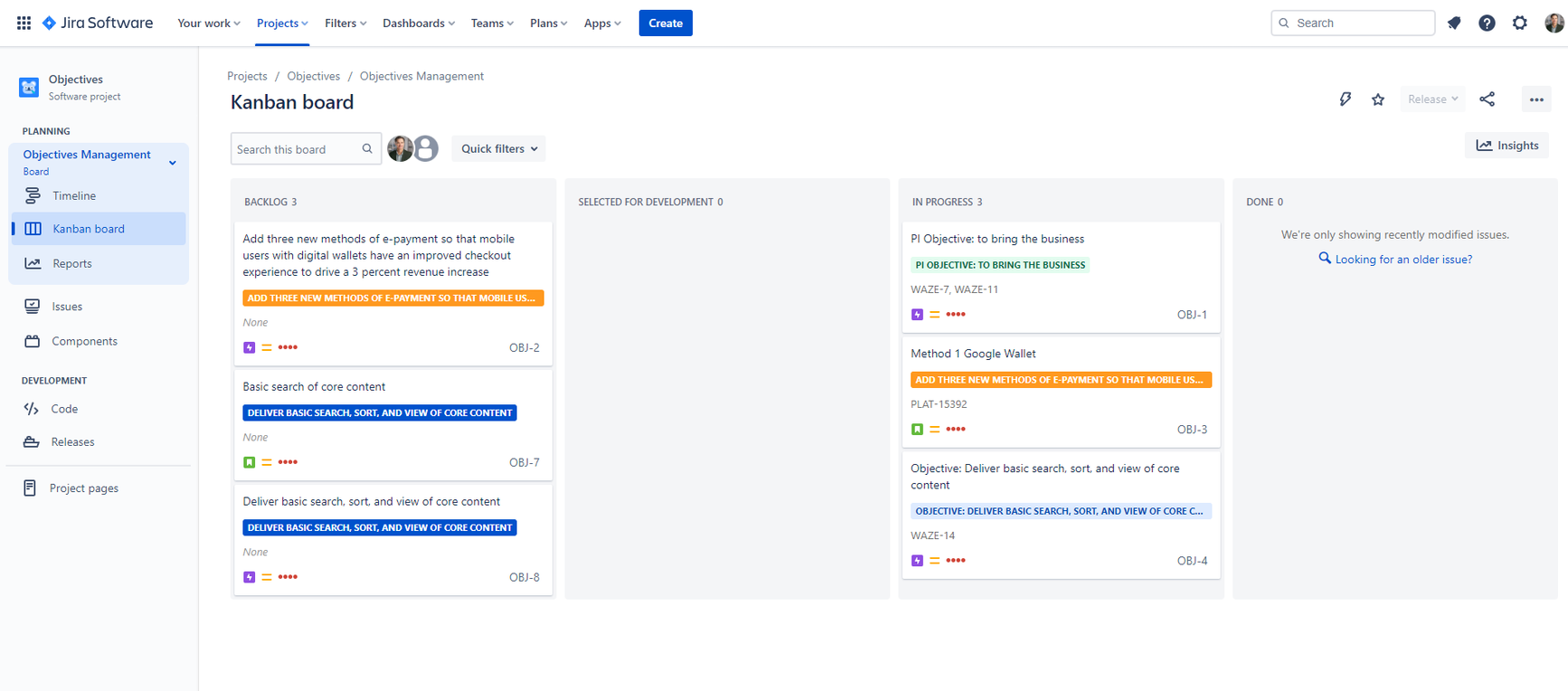How to conduct PI Planning using Advanced Roadmaps
Learn how to facilitate PI planning using Advanced Roadmaps.
Background
- Conduct the PI planning prep meeting once a quarter with all members of the program to review and plan your work for the next program increment (PI).
- The outcome of PI planning includes a list of committed objectives, features targeted for delivery, and known risks or dependencies.
- Prerequisites:
Description
Meeting guidance: After you've completed the above prerequisites, complete the following steps:
- Execute the PI planning event agenda.
- Review business context and proposed features using the shared PI plan in Advanced Roadmaps

- Review architect context and guidance.
- Review planning context by using team boards in Jira.

- Run team breakouts.
- Verify team capacity for the PI: validate team loads.
- Job to be done: validate team loads
- Ask: Have the teams committed to too much in any of the sprints being planned out this PI?
- Ask: Have updates to capacity for events like holidays and vacations been taken into account?
- Ask: Can work shift between teams if some are overloaded while others have capacity?
- Review team features schedule and committed dependencies.
- Identify ROAM risks: review risk mitigation.
- Ask: Are there any additional risks we should account for around the delivery of this feature?
- Ask: If there are accepted risks, is there nothing we can do to help mitigate the risk?
- Ask: Do we need to escalate any risks up to senior leadership for help?

We suggest noting objectives in Confluence and displaying objectives coverage in Jira using a label or custom field.
- Define and commit objectives and set planned value scores.
- Job to be done: Commit to objectives and dependencies.
- Ask: Are there any additional features that should be linked to this objective?
- Ask: Do we know how we will measure to validate whether we’ve hit the target value?
- Ask: Are there any other risks or dependencies we need to account for on this objective before committing?

- Capture decisions.
- Conduct a confidence vote.
- Modify decisions to capture the decisions made during the meeting.
- In Confluence, open the page for the meeting.
- Set action items to any actions needed for risk mitigation, or follow-up needs.
- Modify decisions to capture the decisions made during the meeting.
- Follow up after the meeting.
- Confirm that decisions are communicated across the program.
- Share your plan with the program and stakeholders.
- Conduct weekly scrum-of-scrums to stay on track with your plan.
Output
- Distribute the meeting notes link in Confluence to all appropriate stakeholders using appropriate channels, including email, Slack, etc.
References
Next step:
How to create a PI sprint plan in JiraWas this content helpful?
Connect, share, or get additional help
Atlassian Community